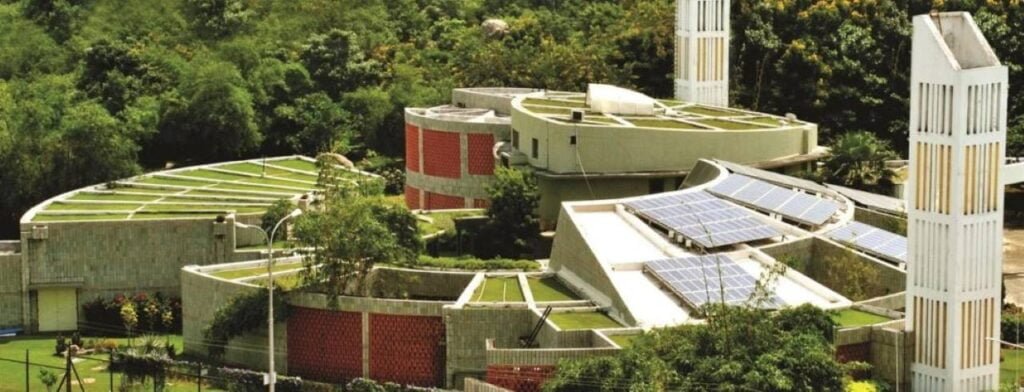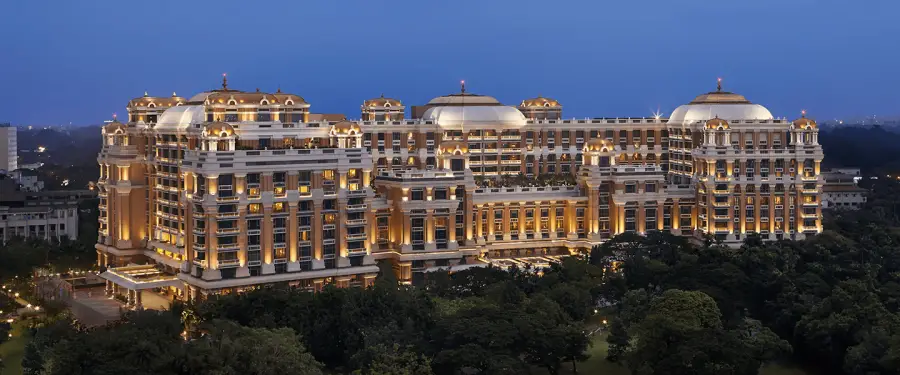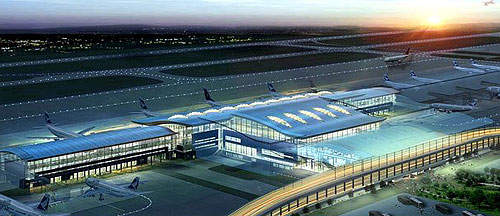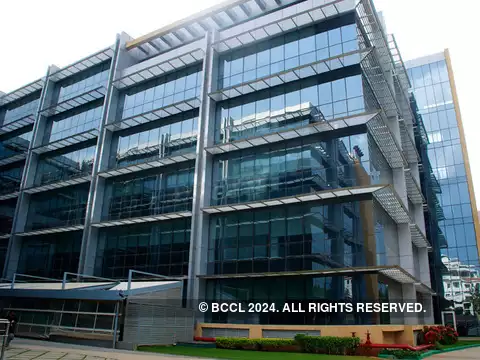Table of Contents
What is a green building?
Green building, or sustainable design, is the practice of accelerating the efficiency with which buildings and their sites use energy, water, and materials, and of reducing impacts on human health and the environment, considering the total life span of a building. Green-building concepts are not only restricted to the walls of buildings but also include site planning, community and land-use planning issues.
Why is Green Building important?
The growth and development of our communities feature a large impact on our natural environment. The whole process of building a building that is designed and planning, construction, and operation, handles the consumption of many of our natural resources.
Let’s discuss some of the sustainable buildings in India that inspire the entire world.
Suzlon One Earth

Suzlon Energy Limited pledged to make the greenest office in India. The building is 3-story high and is constructed on 10.5 acres. It achieved LEED for New Construction Platinum certification from the India Green Building Council and Five-Star GRIHA (Green Rating for Integrated Habitat Assessment) certification.
Inspired by vernacular architecture, the planning provides 90% of the spaces with daylight and external views, allowing inhabitants to enjoy seasons and weather and connect with the time of the day.
5% (154 kilowatts) of its annual energy is generated through conventional and building-integrated photovoltaic panels (20%) and wind turbines (80%), on-site.

Aluminum louvers allow daylight and cross-ventilation, acting as protective skin to the building. LED lighting systems and solar water heating save energy. 100% of sewage grey water is recycled into flushing, landscaping, and air-cooling systems, while 100% of rainwater is harvested. Glass exhaust chimneys with tropical plants act as visual connectors between all floors and permit aeration of the basement parking lot.
The focus of the complex may be a central courtyard that features a forty-meter traditional obelisk reaching bent the sky from the basement and a waterfall facing a crescent cafeteria. This corporate campus may be a counterblast to prevailing glass-box architecture occurring across India and maybe a game-changer in terms of how corporate campuses are designed so far in India.
Sohrabji Godrej Green Business Centre, Hyderabad

Sohrabji Godrej Green Business Centre led by the Confederation of Indian Industry (CII, a non-profit organization) has been at the forefront for the past 15 years in leading India’s green building movement. The design of the Centre back in 2004 maybe a live demonstration and reflection of a conducive green building, and, therefore, at that point, it had been the primary LEED Platinum Certified Building in India and out of doors the U.S.
The building stands as a true pioneer and a catalytic example of using traditional methods of sustainability in amalgamation with modern technologies.
The 20000 sq ft building sits on 5-acre land having only a 9.2 percent footprint, ensuring minimum disturbance to existing features. Located centrally on the flattest land available with landscaping and foliage all around, it provides a soothing microclimate and minimizes the impact of pollution on the inhabitants.
More than half the roof area is converted into a terrace garden, minimizing the inside temperature.
Along with it, the solar photovoltaic cells on the sundeck help in producing nearly 20 percent of the building’s energy consumption. Two air cooling towers chill the air up to eight degrees by sprinkling water and hence reducing the load on the air-con.

The building has been oriented through various energy stimulation exercises such as that 90 percent of the inside gets direct sunlight, reducing the necessity for artificial lighting. Further, north facades are glazed to realize efficient diffused light. Double-glazed units with argon gas stuffing between the glass panes enhance the thermal parcels.
Glowing light, which also contributes to overheating in sections of a structure, was avoided by the use of traditional styles of slipup Jalli walls.
These create a screening effect allowing air to undergo and ending scorching sun heat and casting beautiful light patterns. The other provisions, like rainwater harvesting, Root Zone Treatment system, indoor air quality monitoring, and high-performance glass, make it one of the simplest samples of passive designs.
The building’s confident form and well-researched and sought-out techniques successfully exuberate symbolic power and have become a stimulus to support the Indian green movement to radiate as wide as possible.
ITC Grand Chola

Along with the unparalleled bespoke experiences for their discerning guests, ITC Hotels also sets new benchmarks in planet positivity. Using renewable energy, recycling solid waste, conserving water, banishing single-use plastic, and reducing their carbon footprint at every step- ITC has been everything and more. It is actively involved to keep alive our time-honored rituals that promote well-being.
ITC Chola in Chennai received a LEED Platinum for New Construction category in 2012 and is also among the top sustainable buildings in India. Being the most important hotel to receive the award, it prides itself to be Carbon Positive, Water Positive, and Waste Recycling Positive.

Apart from the use of solar energy, sustainable building materials, there is an attempt to have Zero Discharge into Sewers status- no wastewater will be discharged into sewers. Their use of sewage treatment plants, treat wastewater to almost potable quality water. The treated water is used for horticulture, cooling towers extending the additional wastewater into the neighboring golf course (The Madras Golf Course). Green roofs and external areas use stormwater catchment. Additionally, 100% of their electrical energy demands are powered by a self-owned wind farm carrying a capacity of 12.6MW Kundadam, near Coimbatore, the excess of which is contributed to the Tamil Nadu Electricity Board.
Hyderabad Gandhi International Airport

GMR-led Hyderabad International Airport has been established in an area spreading over 5000 acres, and half of the premises are with a natural ecosystem and support the life of various flora and fauna.
Landscape design at Rajiv Gandhi International Airport, Hyderabad is based on modern and contemporary architectural styles created through artistic ideas. The landscape altogether areas provides a robust visual identity through the utilization of straightforward, yet bold and aesthetic hardscape treatment, planting statements, and streetscape expressions.
Once you enter the airport premises at the entry plaza you’re greeted with a blooming expanse of sloped planters, curvilinear walls, palms, ground cover, and xerophytic plants. The main access road of the airport offers a 12 km long four-tiered landscape on both sides. This consists of open fields, ground cover, shrubs, and trees. 3 metre medians running through this 12km stretch of the road are dotted with shrubs, palm trees equipped with a cloud-based fully automated irrigation system.
Inside the terminal, there are over 15000 plants of varied species, types, and heights displayed at various locations in the building. All plants are planted in soil-less media and displayed in various sorts of Indian and imported planters made in steel, ceramic, FRP, and fired clay.

A unique green wall or vertical garden covering 150 square meters at RGIA is the first of its kind in India to be displayed under indoor conditions. The scheme of plants is rotated at frequent intervals with fresh, disease-free, and healthy stock plants maintained at GHIAL nursery.
The airport is operating with a focus on conserving natural resources by practicing the 4Rs concept- Reduce, Reuse, Recycle, and Replenishment towards environmental protection.
Action for Social Advancement (ASA) Head Office

Action for Social Advancement (ASA) is a non-profit development organization whose mission is to ensure livelihoods through development services with an emphasis on natural resource development. In its head Office in Bhopal, ASA proudly showcases its ethos of ecological principles.
The land available for the building is at the lowest level of the plotted development and gets waterlogged. Added thereto the character of Black Cotton soil (low water percolation rate) and therefore the inadequately designed outflows made the water stagnate for an extended time. In response to this, the building was raised by a floor and the area left below was converted into a wetland and a stepped well. This led to the avoidance of flooding and the replenishment of shallow aquifers.
The stepped well was designed as a gathering space for the community around. The crucial strategies included passive building planning, energy efficiency, water management, and biodiversity. Features like deep overhangs and courtyards while reducing the heat gain and glare ensured an ample amount of daylight within. Eastern and western facades were designed to have skewed windows to cut the glare of the horizontal sun without losing daylight and fresh air. The landscaped court on the top floor and common court and balcony spaces on all floors were brought in to facilitate interactions spill-over space for the workshop and board room, respectively.
Insulating the roof was a crucial part of the passive cooling strategy, which was done by higher ceilings, and the use of the local brickbat Coba (a thick layer of broken bricks on top of the roof) for weatherproofing course.

The wetland provides nesting spaces for birds in the summer with its aquatic and semi-aquatic flora. Operational energy usage was reduced through the use of LED fixtures, energy-efficient fans, and an air-cooling system. This has shown a reduction of energy consumption by 66% compared to the previous office space occupied by ASA. All the energy is produced by a 20kVA solar PV panel system installed on rooftop.
Water for up to four months of the year can be generated from rainwater harvesting, and excess from the storage is used for recharge. The consumption of water was reduced considerably by using water-efficient fixtures.
Infinity, Kolkata

Infinity Benchmark in Kolkata, a 20-story covering an area of 560,000 Square Feet, became the city’s first platinum-rated building designed by the firm Agrawal and Agrawal Architects.
Choice of building materials, use of polyfoam coating under the roof, and an energy-efficient design helped in effectively insulating from heat gain. Double glazing reduced 75% of incoming heat. About 20% of recycled materials were used in the method of building alongside another 20% locally sourced.

A rainwater harvesting system, along with a water treatment system, minimizes reliance on external water sources. Wastewater that is treated and recycled is commonly used for irrigation and cooling purposes. A pioneering move to promote environmental systems was the induction of charging points for electric cars.
Infosys, Mysuru

The Infosys Mysuru campus has been awarded the LEED EBOM (Leadership in Energy and Environmental Design – Existing Building Operation & Maintenance) Platinum certification by us Green Building Council (USGBC).
Infosys now has 18.25 million square feet of the very best rated green buildings–of which 16.9 million square feet are LEED Platinum rated and 1.35 million square feet are GRIHA 5-star rated buildings.

The LEED Green Building scoring system may be a globally accepted benchmark for the design, construction, and operation of high-performance green buildings. Infosys has the most important building area certified as LEED Platinum within the IT office space category. To form its campuses sustainable and resource-efficient, Infosys has since 2008 followed a two-pronged strategy to style new buildings to the very best energy efficiency standards and implement deep retrofits in old buildings.
At the Mysuru campus, large-scale retrofit projects in existing buildings, including food courts, training centers, guest houses, and sports complexes, were some ways through which efficiency improvements were achieved. Major interventions included the entire re-engineering of chiller plants, air handling units, building management system (BMS) retrofit, UPS, and lighting retrofit. Initiatives like these have helped Infosys lower its operating costs, improve equipment life, achieve better indoor air quality, and increase occupant comfort and satisfaction.
Indira Paryavaran Bhawan

Indira Paryavaran Bhawan, the new office block for the Ministry of Environment and Forest (MoEF) sets, may be a radical change from a standard building design.
It puts special emphasis on strategies for reducing energy demand by providing adequate natural light, shading, landscape, to scale back ambient temperature, and energy-efficient active building systems. Several energy conservation measures were adopted to scale back the energy a lot of the building and therefore the remaining demand was met by producing energy from on-site installed high-efficiency solar panels to realize net-zero criteria. It uses 70% less energy compared to a standard building. The project adopted green building concepts including conservation and optimization of water by recycling wastewater from the location.
It is now India’s highest green-rated building. The project is a GRIHA 5 Star and LEED Platinum-certified building. The building has already won awards like the Adarsh/GRIHA of MNRE for exemplary demonstration of integration of Renewable Energy Technologies.

Godrej Plant 13 Annexe

Built-in Mumbai in 2008, Godrej Plant 13 Annexe of a 24,443 sq. meter area office-cum-convention was awarded the ‘Net Zero Energy Rating’ by the IGBC scoring system attaining 77 points. An onsite and offsite renewable energy system powers the whole site. The building regenerates 8% of its energy demand through solar rooftop panels.
Several additional features and upgrades are added to realize net-zero. These include improving upon the building’s systems (HVAC, lighting) performance; monitoring energy performance at the system level to know energy end-use efficiencies; addressing cost streams related to building operations; improving occupant comfort leading to productive employee workspaces; enlightening building occupants and visitors regarding the benign impact on the environment; providing public recognition for leadership in sustainability; and becoming a case study for other corporates to emulate in future.
By the building’s design, most areas are natural daylight. The centralized air-conditioning system has been designed considering the diversified occupation of the building.

System-level monitoring and analytics of HVAC, lighting, ventilation energy consumption and solar PV generation on a day to day have resulted in the identification of potential energy-saving opportunities and control of operations; Rs 0.15 million has been invested towards institutionalizing a system-level metering system, which has yielded significant benefits by way of monitoring and control of wasteful energy within the building.
The overall energy consumption reduction within the past two years is 276 MWh (7 percent of total energy consumption). Energy cost reduction for the past two years has been Rs 4.8 million (8 percent of the entire energy cost). Total energy generated from renewable sources (rooftop solar PV) is 8 percent.
CISCO Smart Campus, Bangalore

The Cisco Smart Campus, Bangalore, spread across 2.18 million sq. ft of built-up area was certified 5 LEED-Platinum building. It scored a complete of 96 from a possible 110 points. The entire building’s energy consumption is being offset by green power investments amounting to over 70,00,000 kWh of green power once a year.
To encourage cycling, provision is formed for bicycle parking and shower facilities. on-site generated construction waste diverted quite 80% from landfills. Renewable material cost accounts for 7.7% of the project’s material cost. The development process used about 21% of materials manufactured by recycling materials. Provisions are made to encourage bicycle and shower facilities for workers, including 53% of the bottom building on-site parking is found underground or undercover.

FAQ
Q. What is the concept of green building in India?
A. Green building in India refers to the practice of creating structures that are environmentally responsible and resource-efficient throughout their lifecycle. These buildings aim to reduce their impact on the environment and human health.
Q. What are the top 10 green buildings in India?
A. Some of the top green buildings in India include the Suzlon One Earth, Sohrabji Godrej Green Business Centre, ITC Grand Chola, Hyderabad Gandhi International Airport, Infosys Mysuru campus, Indira Paryavaran Bhawan, Godrej Plant 13 Annexe, Infinity Benchmark in Kolkata, and CISCO Smart Campus in Bangalore.
Q. Who are the best eco-friendly architects in India?
A. Some of the best eco-friendly architects in India include Christopher Benninger, Rajeev Kathpalia, Brinda Somaya, and Manit Rastogi, among others.
Q. What are some key features of eco-friendly buildings in India?
A. Eco-friendly green buildings of India incorporate sustainable materials, energy-efficient designs, water conservation techniques, and renewable energy sources to minimize their environmental impact.
Q. How do green buildings contribute to energy efficiency in India?
A. Green buildings use energy-efficient technologies such as solar panels, LED lighting, and insulation to reduce energy consumption and promote renewable energy sources.
Q. What are some examples of energy-efficient buildings in India?
A. Some examples of energy-efficient buildings in India include the Suzlon One Earth, Sohrabji Godrej Green Business Centre, and the Infosys Mysuru campus, among others.
Q. What are the benefits of eco-friendly buildings?
A. Eco-friendly buildings offer benefits such as reduced energy costs, improved indoor air quality, lower water consumption, and reduced environmental impact.
Q. How do green buildings in India compare to the best green buildings in the world?
A. Green buildings in India are on par with the best in the world in terms of sustainability, innovation, and design. They incorporate cutting-edge technologies and practices to minimize their environmental impact.
Q. How can I make my building more eco-friendly?
A. To make eco-friendly building in India, you can use sustainable materials, install energy-efficient appliances, incorporate green spaces, and promote water conservation practices.
Q. What are some key considerations when designing an energy-efficient building in India?
A. When designing an energy-efficient building in India, it’s important to consider factors such as climate, orientation, insulation, shading, and use of renewable energy sources.




